Submissions
Submission Preparation Checklist
All submissions must meet the following requirements:
- This submission has not been previously published, nor is it before another journal for consideration.
- All authors have reviewed the manuscript and share equal responsibility for its contents.
- One author has been designated as the corresponding author with contact details:
• E-mail address
• Full postal address - All necessary files have been uploaded in Microsoft Word (.docx) format:
• Cover letter
• Manuscript - The manuscript includes the title page, abstract, keywords, introduction, methods, results, discussion, conclusions, acknowledgments, contributorship statement, funding, conflicts of interest, data availability, references, and supplements (optional), and it has been organized in the aforementioned order.
- The manuscript has been checked for spelling and grammar mistakes.
- The Methods includes an ethical statement.
- All tables, figures, and equations have been numbered, labeled, and placed correctly within the text.
- Permission has been obtained to publish all photos, datasets, and other material provided with this submission.
- Using generative artificial intelligence (AI) or AI-assisted technologies has been disclosed.
- All references mentioned in the Reference List are cited in the text, and vice versa.
- All references have been verified for accuracy, completeness, and adherence to Vancouver-style guidelines.
Reviews
A "Review Article" is a narrative review, also called a traditional or non-systematic review. It is a scholarly report that summarizes, synthesizes, and critiques existing literature on a specific subject. Unlike systematic reviews, narrative reviews generally do not follow a strict, predetermined protocol for searching and selecting studies, which allows for more subjective interpretation and synthesis of results. When writing "Review," there is no fixed order to follow, enabling authors to present the issue in the most suitable way. The goal is to ensure that the subject is effectively conveyed. It is important that the text does not exceed 3000 words.
Research Letters
Research letters are structured like original articles and usually contain results that are either insufficient for a full research article or when authors do not have the time to write a full-length article.
Short Communications
Short communication articles are used to report high-quality findings, including preliminary or significant results. They are similar to original articles but are more concise, resembling a long abstract. The first section of the article should provide a brief background and aim (introduction), followed by sections detailing the methods and results, and ending with a discussion and a concise conclusion. The abstract can be fewer than 150 words. The text should be between 400 and 1700 words and contain at least five references. Up to 2 tables and figures can be included.
Letters to the Editor
"Letters to the Editor" articles are brief communications that can cover any topic within the journal's scope. There are three types of Letters to the Editor: standalone submissions, responses to published articles, and submissions in response to a journal's call. Standalone submissions may encompass personal experiences, opinions, and conceptual ideas. When writing "Letters to the Editor," there is no strict order to follow, allowing authors to express their ideas in the most appropriate way. The purpose is to ensure that ideas are presented effectively. The text should not exceed 1500 words and must include a minimum of three references. Additionally, the abstract can be fewer than 150 words, and a maximum of 2 tables and figures can be included if needed.
Commentaries
It is noteworthy that when writing "Commentaries," there is no strict requirement to follow a specific order. This flexibility allows authors to express their ideas in a way that is most appropriate for the intended audience and message. The purpose is to make sure that the ideas are presented in the best possible way. The abstract can be fewer than 150 words.
Privacy Statement
The names and email addresses entered in this journal site will be used exclusively for the stated purposes of this journal and will not be made available for any other purpose or to any other party.


